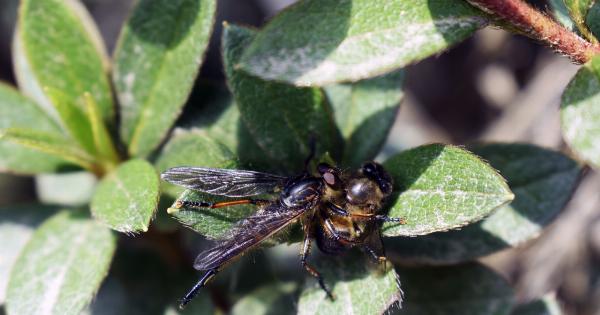When it comes to consuming insects, many people may cringe at the thought.
However, what if we told you that you unwittingly include an average of 500 grams of insects in your diet every year? Yes, it’s true! Insects are more ubiquitous in our food system than you may think. Let’s delve into the fascinating world of entomophagy and explore how insects make their way onto our plates.
1. An Ancient Practice
While the idea of eating insects may seem novel to many, it is far from a new concept. Entomophagy, the consumption of insects by humans, has a long history and is practiced in many cultures around the world.
In fact, it has been estimated that over 2 billion people worldwide include insects in their regular diet.
2. Unintentional Consumption
Although you may not explicitly add insects to your meals, they often find their way into our diets through various means. One common way is through food processing.
Insects can accidentally end up in food products during cultivation, harvesting, transportation, or processing.
3. Hidden Insect Ingredients
Many processed foods contain hidden insect ingredients that most consumers are unaware of. For example, carmine, a natural red food coloring commonly used in beverages, dairy products, and confectionery, is derived from scale insects.
Additionally, cochineal extract, another common food coloring, is made from dried female cochineal insects.
4. Flour Power
Another surprising source of insect consumption is flour. Flour made from grains often contains small insect fragments or eggs.
Insects such as weevils, beetles, and mites can infest stored grain products, inadvertently making their way into our baked goods, bread, pasta, and more.
5. Nutritional Benefits
While the idea of eating insects may not be palatable to everyone, they offer several nutritional benefits. Insects are rich in protein and contain essential amino acids, healthy fats, vitamins, and minerals.
They are also more environmentally sustainable compared to traditional livestock, requiring less water, land, and resources to produce.
6. Insects as a Delicacy
Despite the unintentional consumption, insects are also intentionally sought after and enjoyed as a delicacy in many cultures.
Fried crickets, roasted mealworms, and ant larvae soup are just a few examples of insect-based dishes that are considered delicious and nutritious in various parts of the world.
7. The Rise of Insect-Based Products
In recent years, there has been a surge in the popularity of insect-based products. Companies are capitalizing on the nutritional value and sustainability of insects by incorporating them into snacks, protein bars, pasta, and even burgers.
These products cater to those seeking alternative protein sources and more eco-friendly food choices.
8. Overcoming Cultural Barriers
While insects are a staple in many cultures, they continue to face cultural barriers in the Western world. Western societies often perceive insects as pests rather than a potential food source.
However, with increased awareness, education, and innovative culinary approaches, the acceptance of insects as a food option is gradually expanding.
9. Regulatory Considerations
As the consumption of insects gains traction, regulatory bodies around the world are addressing the need for standardized guidelines and safety protocols.
Ensuring the farming, processing, and incorporation of insects into the food supply are subject to rigorous quality control measures is essential for the widespread acceptance of insect-based foods.
10. Exploring the Future
As global challenges such as food security, population growth, and environmental sustainability intensify, the incorporation of insects into our diets may become more prevalent.
Research is ongoing to develop new methods of insect farming, incorporate insects into familiar food products, and overcome the psychological barriers associated with entomophagy.































